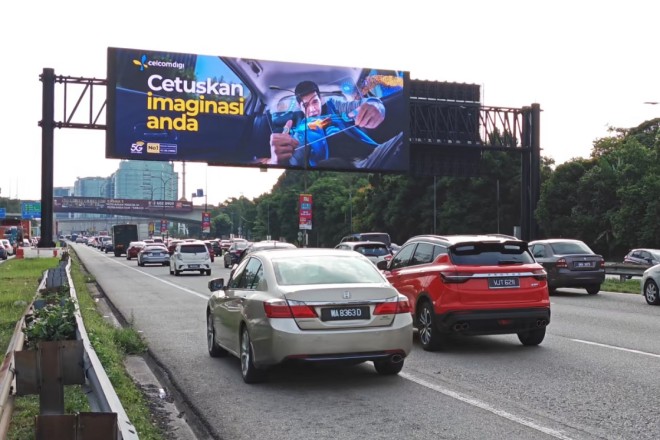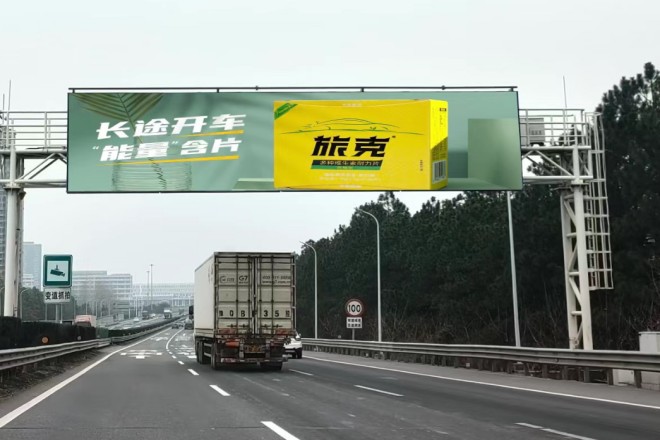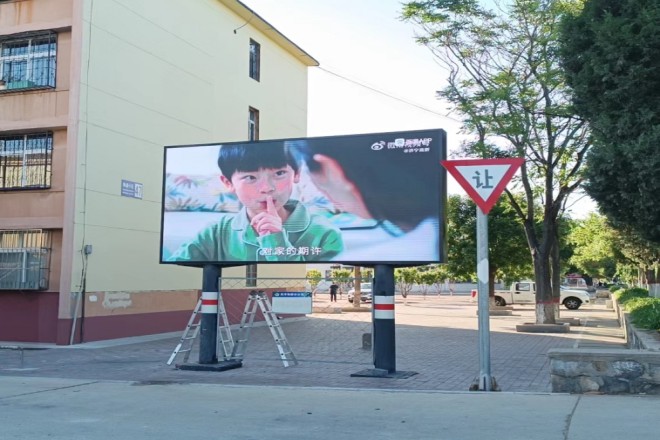Introduction

Outdoor LED displays, with their brilliant brilliance, add a touch of color to the night sky of the city. They not only carry multiple roles, such as commercial advertising and public information, but also become a symbol of urban vitality.
However, while enjoying this visual feast, we also have to face the energy consumption, safety challenges, and daily maintenance pressure it brings.
Therefore, exploring the remote power-off function of outdoor LED displays is like installing an intelligent switch for these “city lights,” which can make them dazzling when needed and quietly extinguish them when not necessary, which is both environmentally friendly and safe.
1. The necessity of remote power-off of outdoor LED displays

When we stroll through the streets and alleys of the city, those colorful and informative outdoor LED displays always attract our attention.
However, in addition to the visual enjoyment they bring to us, have you ever thought about whether these displays also silently consume electricity when not in use?
Or, can they be protected in time when encountering bad weather? In fact, the remote power-off function of outdoor LED displays is designed to solve these problems. Its importance is self-evident, mainly reflected in the following aspects:
1). Energy saving and power saving, economical and affordable
At night, when the city gradually quiets down, those outdoor LED displays that are still on are like lights that never go out, illuminating the night sky of the city. However, this continuous lighting not only wastes a lot of electricity but also increases operating costs.
The remote power-off function is like a smart energy-saving assistant. It can automatically turn off the display during non-working hours, reduce unnecessary power consumption, and thus achieve energy saving and power savings. This not only helps to reduce electricity bills but also contributes to the city’s environmental protection cause.
2). Safety protection, preventive measures
The outdoor environment is complex and changeable, and severe weather, such as lightning, heavy rain, and typhoons, occur from time to time. These weather conditions pose a serious threat to outdoor LED displays. Once encountered, they are likely to cause equipment damage or safety accidents. The remote power-off function is like a reliable guardian.
It can quickly cut off the power supply of the display before or when severe weather occurs, thereby avoiding equipment damage, fire, and other safety accidents. This timely safety protection not only protects the safety of the display itself but also ensures the safety of the surrounding environment and personnel.
3). Extend life and enhance value
As the core component of outdoor LED display screens, the service life of LED light-emitting tubes is closely related to the working environment and usage. Long-term high-brightness work will accelerate the light decay of LED light-emitting tubes and shorten their service life. The remote power-off function is like a caring maintenance technician.
It can shut down the display screen during non-essential periods and reduce its working time and brightness, thereby reducing the speed of light decay and extending the service life of the display screen.
In this way, it not only reduces the frequency and cost of replacing equipment but also allows the display screen to always maintain the best display effect and performance, providing more reliable and efficient support for urban information display.
2. Implementation of remote power-off of outdoor LED display screens

Achieving remote power-off of outdoor LED display screens is inseparable from the joint cooperation of hardware, software, and communication technology. Below, we will explain this process in detail:
1). Strong hardware foundation
To achieve remote power-off, the display screen must first have a “listen to command” hardware module, which we call a remote control module.
This module is like the brain of the display screen, responsible for receiving instructions from a distance and deciding whether to turn off the power. This module must be particularly reliable; no matter how bad the weather is, it can work steadily.
At the same time, the power supply system of the display screen must also be upgraded to ensure that when a remote power-off command is received, the power supply can be quickly and safely cut off to protect the display screen from damage.
2). Thoughtful software support
With the hardware foundation, there must be software to help. We need a special remote management software, which is like a remote control, allowing managers to easily control the switch of the display screen, check the status, etc., from a distance.
This software must be designed to be simple and easy to understand, and the functions must be powerful so that managers can operate it conveniently.
Moreover, the software must be constantly updated, just like a mobile phone APP, to fix vulnerabilities and add new functions to keep it in the best condition.
3). Stable communication technology
Remote power off also depends on the support of communication technology. We need to use wireless communication technology (such as 4G, 5G, and Wi-Fi) to transmit instructions and data.
These technologies are like invisible wires connecting the remote management software and the display screen. Of course, this connection must be stable and fast so that the instructions can arrive on time and the display screen can respond accurately.
If there are special circumstances, wireless communication technology is not enough, we can also consider using wired communication technology, such as optical fiber, Ethernet, etc. Although these technologies seem more complex, they can provide higher communication quality and security in some scenarios.
Therefore, the remote power-off of outdoor LED display screens depends on the joint efforts of hardware, software and communication technology. They are like a team, and they cooperate with each other to make the display screen turn off the power obediently when needed.
3. Application case analysis of remote power-off of outdoor LED display screens
The application of remote power-off function of outdoor LED display screens has achieved remarkable results in actual scenarios. The following are some cases of outdoor LED display screens that have successfully applied remote power-off function, as well as the analysis of successful experience in these cases.

1). Outdoor LED display screen in urban commercial center
The large outdoor LED display screen in the urban commercial center needs to play a large amount of advertising information every day. In order to ensure that the display screen can be safely turned off at night or in bad weather, the display screen is equipped with a remote power-off function.
Through the special remote management software, managers can view the working status of the display screen in real-time and quickly cut off the power when necessary.
1.1). Successful experience analysis:
Hardware configuration: The display screen adopts a high-performance remote control module and power management system to ensure the stability and reliability of the remote power-off function.
Software support: The remote management software has a friendly interface and powerful functions. Managers can easily operate it to realize remote power on and off, as well as status monitoring and other functions.
Communication technology: Using 4G wireless communication technology, the real-time stability of remote data transmission and control is realized.

2). Outdoor LED display screen in the highway service area
The outdoor LED display screen in the highway service area is used to play public service content such as traffic information and weather forecasts.
In order to ensure that the display screen can be quickly turned off at night or in an emergency, the display screen is also equipped with a remote power-off function.
Through remote management software, managers can grasp the operating status of the display screen in real-time and perform remote power-off operations when necessary.
2.1). Analysis of successful experience:
Hardware configuration: The display screen uses an industrial-grade remote control module and power supply system, which can work stably in harsh environments.
Software support: The remote management software has powerful data processing and analysis capabilities, can monitor the operating status of the display screen in real-time, and provide alarm information.
Communication technology: Using optical fiber communication technology, high-speed and stable data transmission and control are achieved.
4. Challenges and solutions faced by remote power-off of outdoor LED display screens

Although the remote power-off function of outdoor LED display screens has brought many conveniences in practical applications, it also faces some challenges. The following is an analysis of these challenges and corresponding solutions.
1). Challenges faced
- Stability and reliability issues of remote power-off function
The remote power-off function needs to ensure that the power can be cut off accurately and quickly when needed while avoiding misoperation or false alarms.
However, in practical applications, due to the imperfections of hardware and software, the remote power-off function sometimes becomes unstable or unreliable, such as failure to respond to instructions in time, mistaken power cut-off, etc.
- The impact of bad weather on hardware and communication networks
Outdoor LED displays are usually installed in open-air environments and are easily affected by bad weather.
For example, weather conditions such as lightning, heavy rain, and high temperatures may cause damage to hardware and communication networks, thereby affecting the normal use of the remote power-off function.
2). Solution
- Strengthen the research and development of hardware and software to improve the stability and reliability of the remote power-off function.
The stability and reliability issues of the remote power-off function can be solved by strengthening the research and development of hardware and software.
On the one hand, the design of the remote control module and the power management system can be optimized to improve their anti-interference ability and stability.
On the other hand, the function and interface design of the remote management software can be improved to make it more user-friendly and easy to operate.
- Optimize the layout of the communication network to improve the real-time and stability of data transmission.
The impact of severe weather on hardware and communication networks can be solved by optimizing the layout of the communication network. On the one hand, the construction and maintenance of communication infrastructure can be strengthened to ensure the stability and reliability of the communication network.
On the other hand, advanced communication technologies such as 5G and the Internet of Things can be adopted to improve the real-time and stability of data transmission.
At the same time, protective measures such as installing lightning rods around the display screen can also be considered to reduce the damage to hardware and communication networks caused by severe weather such as lightning.
Conclusion
In summary, the remote power-off function of the outdoor LED display screen is crucial for energy saving, safety, and equipment maintenance. I hope this article can help you.
Finally, if you want to know more about LED displays, please get in touch with us.
